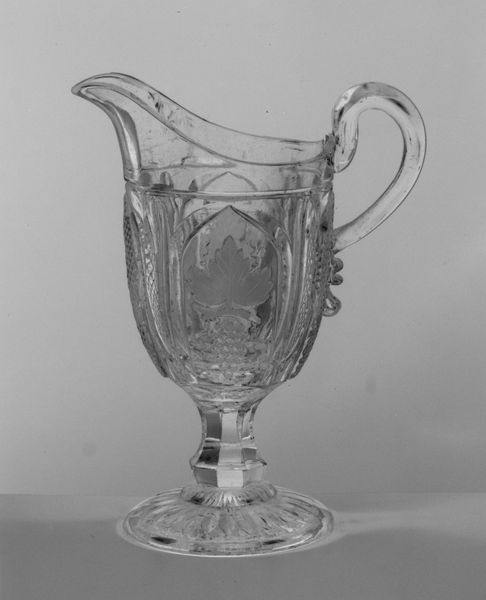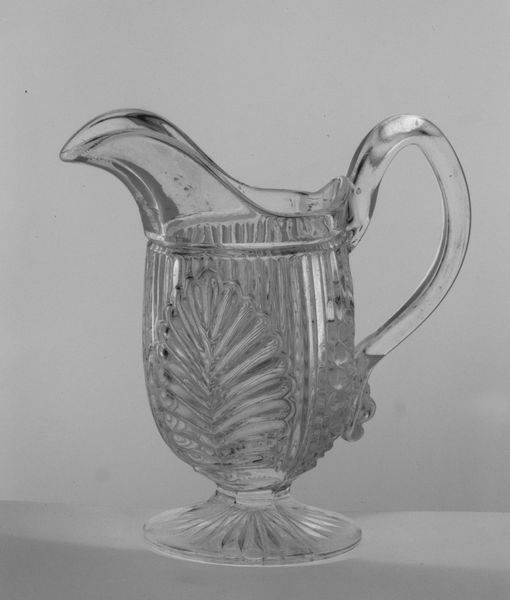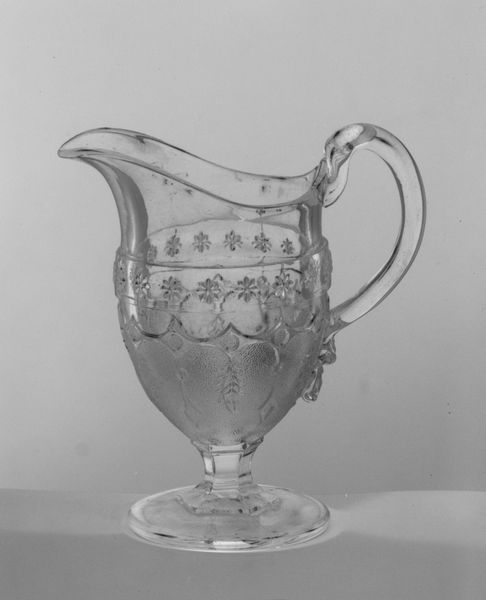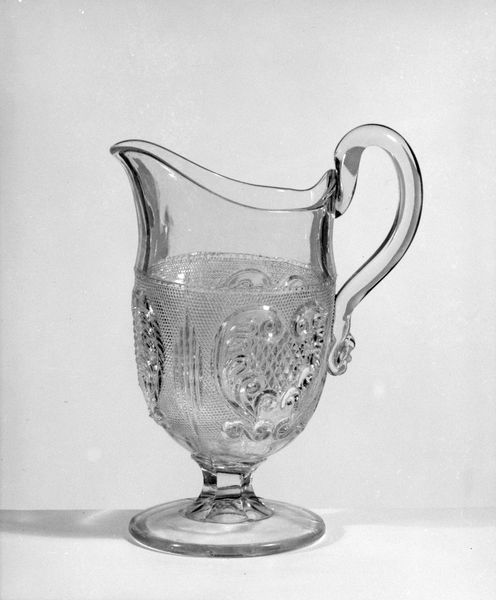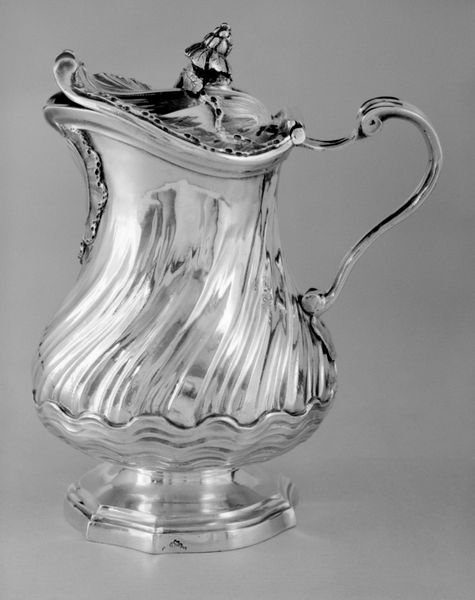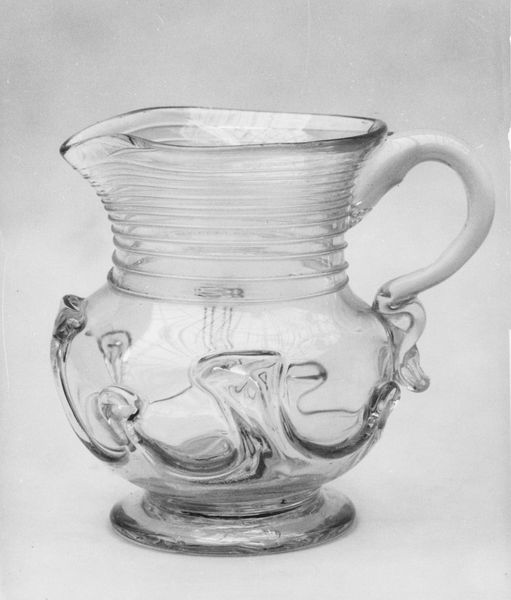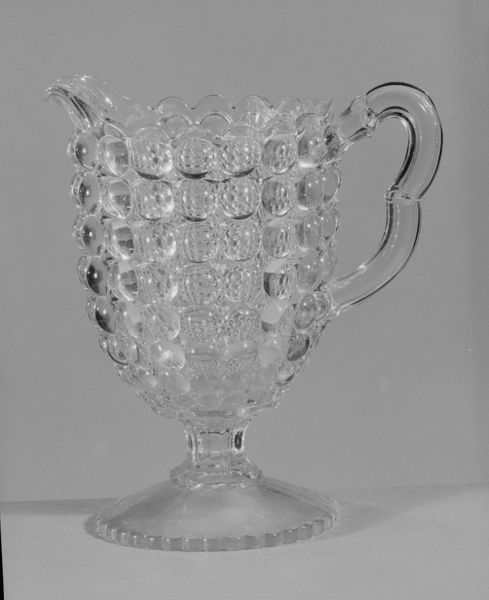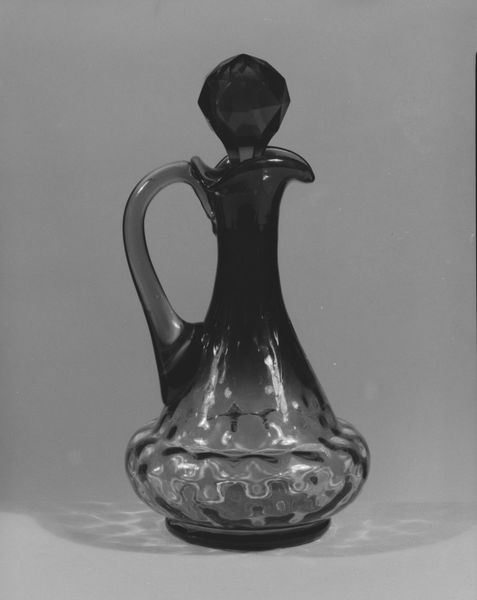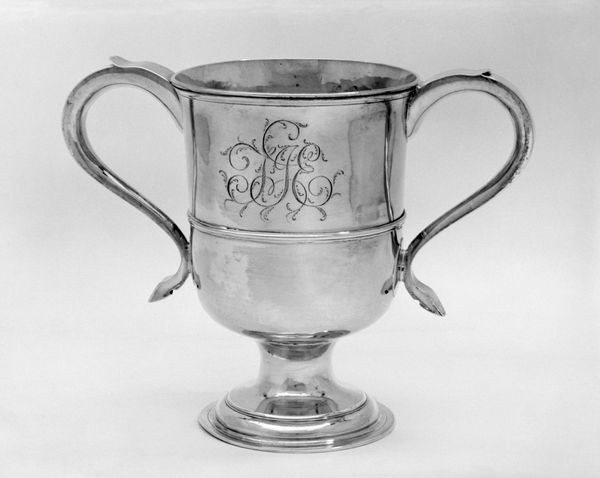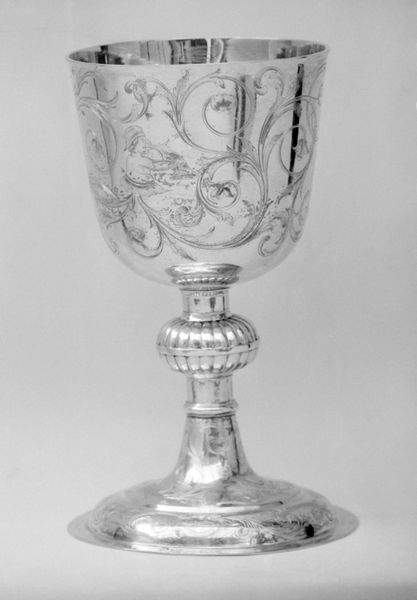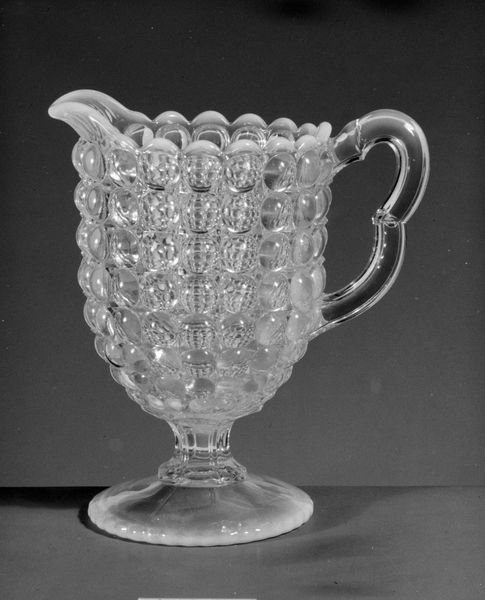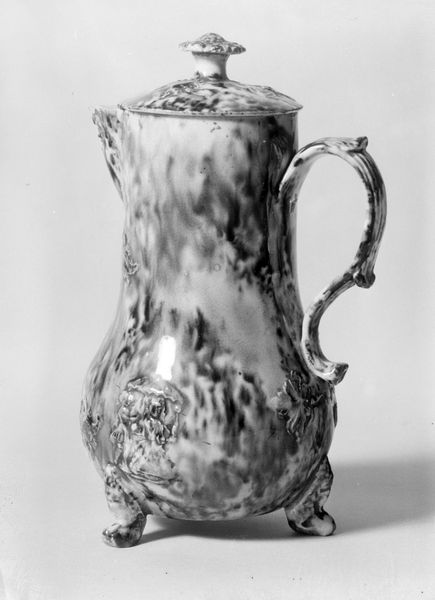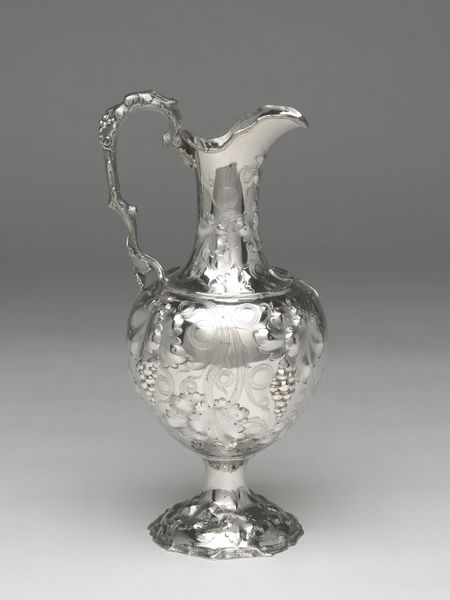
glass, sculpture
#
glass
#
sculpture
#
decorative-art
Dimensions: H. 6 5/16 in. (16 cm)
Copyright: Public Domain
Curator: This Creamer, made of glass sometime between 1855 and 1865 by the New England Glass Company, sits rather innocently, doesn't it? Editor: It does! It’s a small, elegant piece. The clarity of the glass is lovely. What do you see in this piece beyond its surface appeal? Curator: I see more than just a decorative object. Think about the social history embedded within this creamer. Who was pouring cream from this? What did it mean to own such an object during the height of industrialization? Was this an aspirational item, democratizing luxury, or a marker of established privilege? Editor: That's interesting, I never considered its historical context. Curator: The form itself also raises questions. The moulded glass, its patterns – how might those connect to broader anxieties about class and authenticity during the 19th century? Editor: I see what you mean. Was this a way for middle-class people to emulate the lifestyles of the upper class? Curator: Precisely. And how does the object's inherent fragility—its glass composition—relate to the social and economic vulnerabilities of the time? Does it speak to a kind of anxious performance of gentility? Editor: I am thinking that glass became symbolic material because of its transparent and fragile properties? Curator: Precisely! The act of serving cream becomes laden with meaning. Reflect on the everyday rituals that are tied to political undertones. How does that change your understanding of the artwork? Editor: This really gives me a fresh perspective on something that initially just seemed pretty! Thanks. Curator: Absolutely, that intersectional understanding is so important when it comes to viewing artwork through various lenses!
Comments
No comments
Be the first to comment and join the conversation on the ultimate creative platform.
